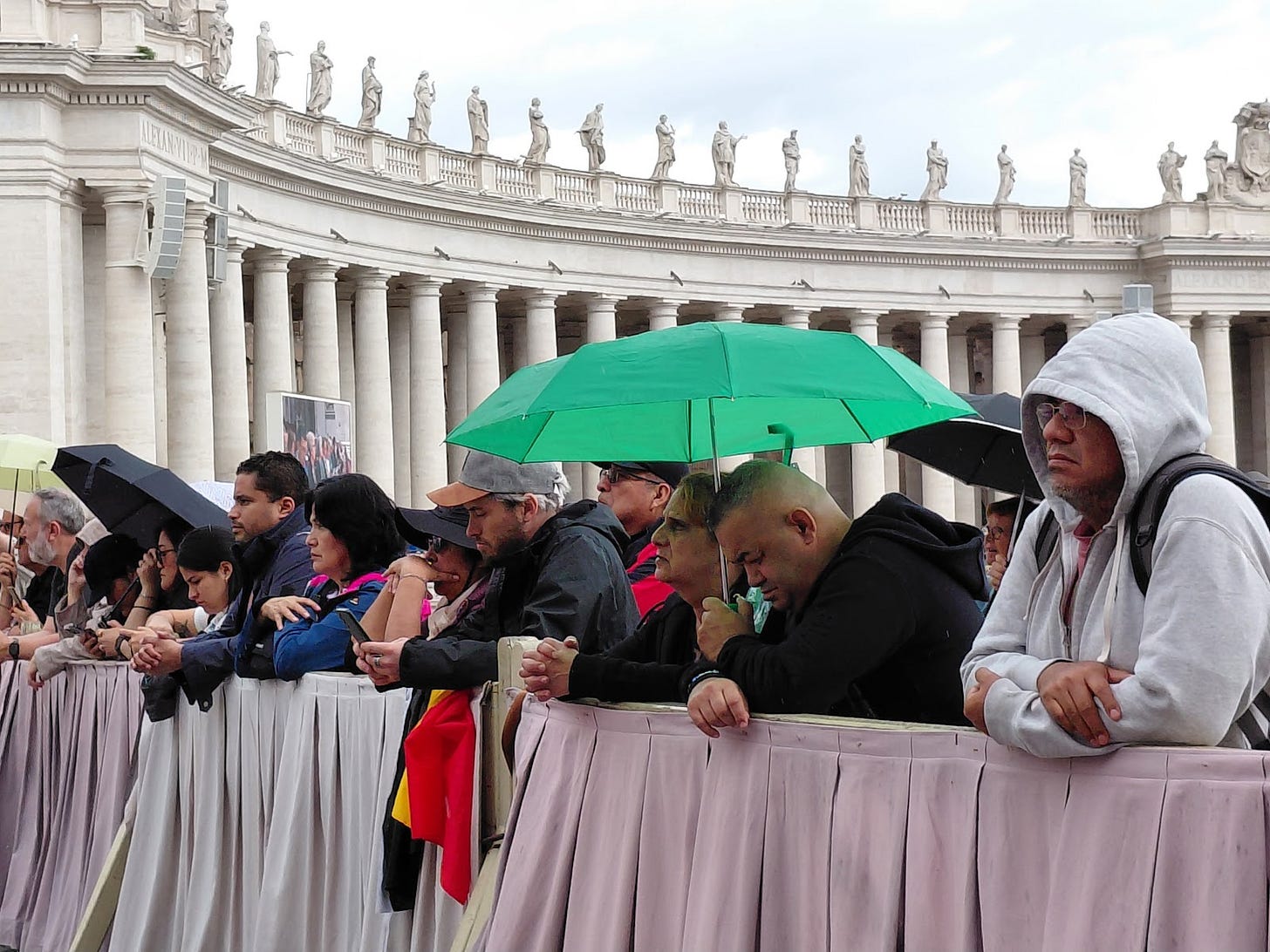Who’s waiting for a pope in St. Peter’s Square?
Pilgrims, tourists, and Buddhist monks gather beneath the Sistine chimney.
Joseph Daniel, originally from Kentucky, stood with his wife, Johanna, and hundreds of other pilgrims in the middle of St. Peter’s Square throughout the Mass for the election of the Roman Pontiff on Wednesday morning.

